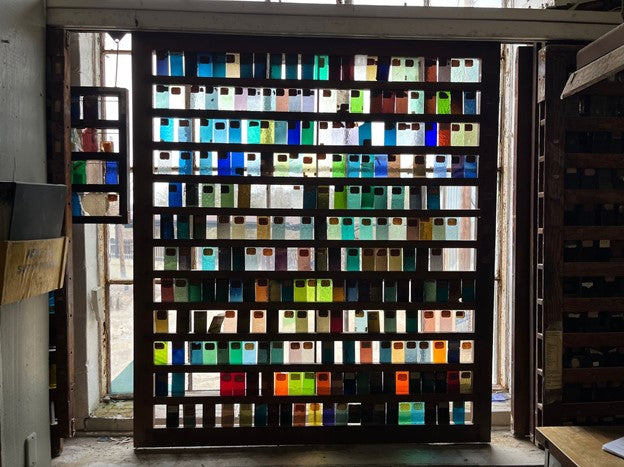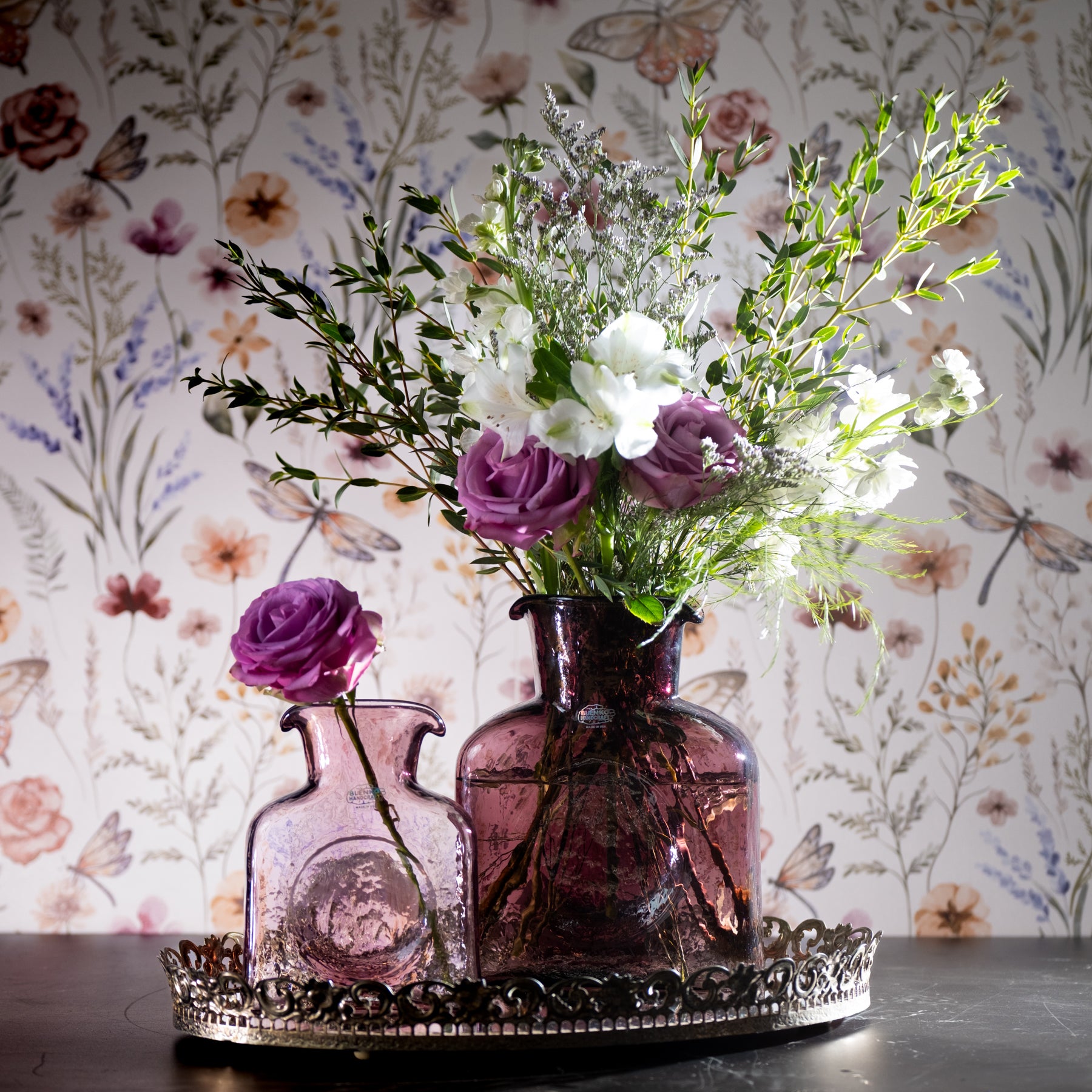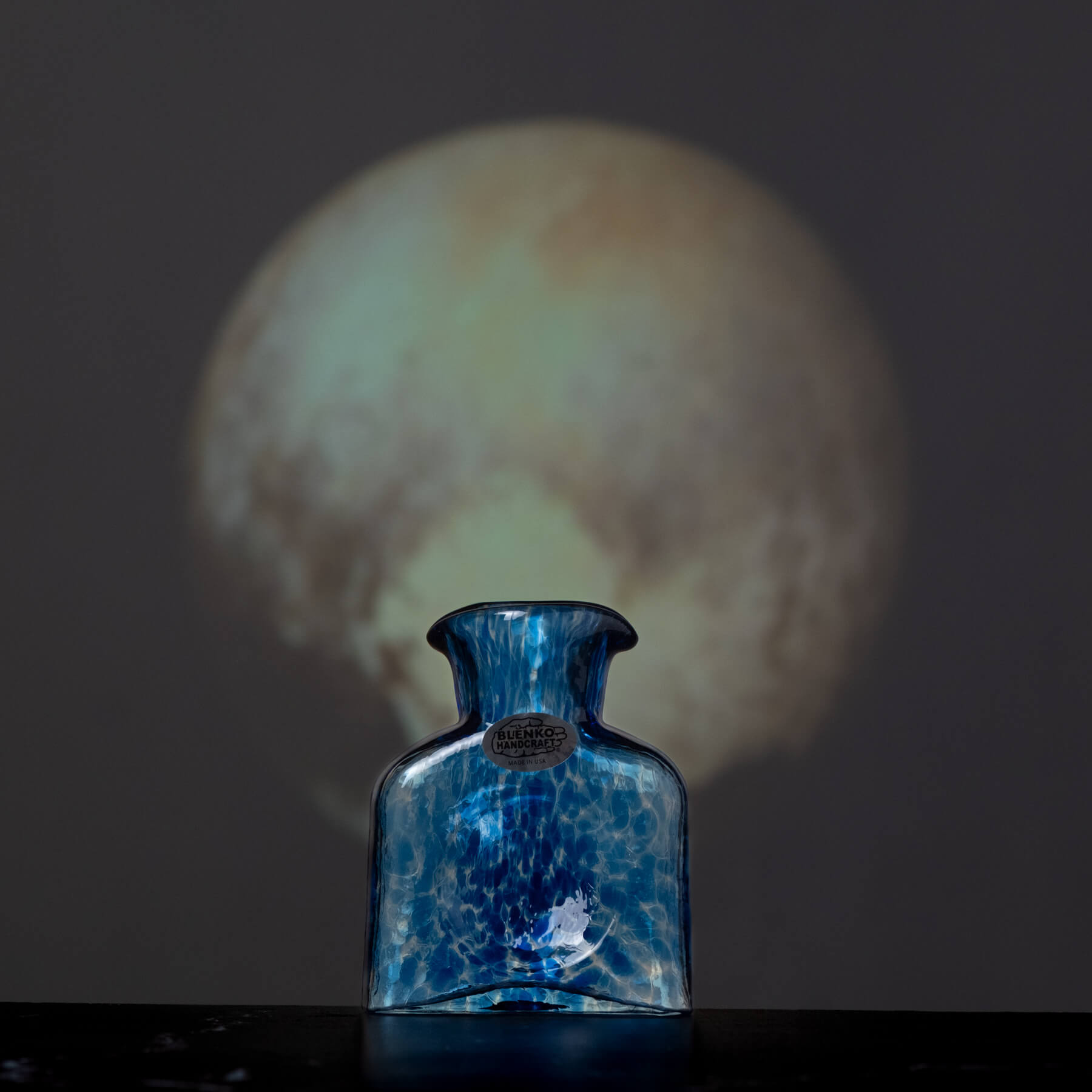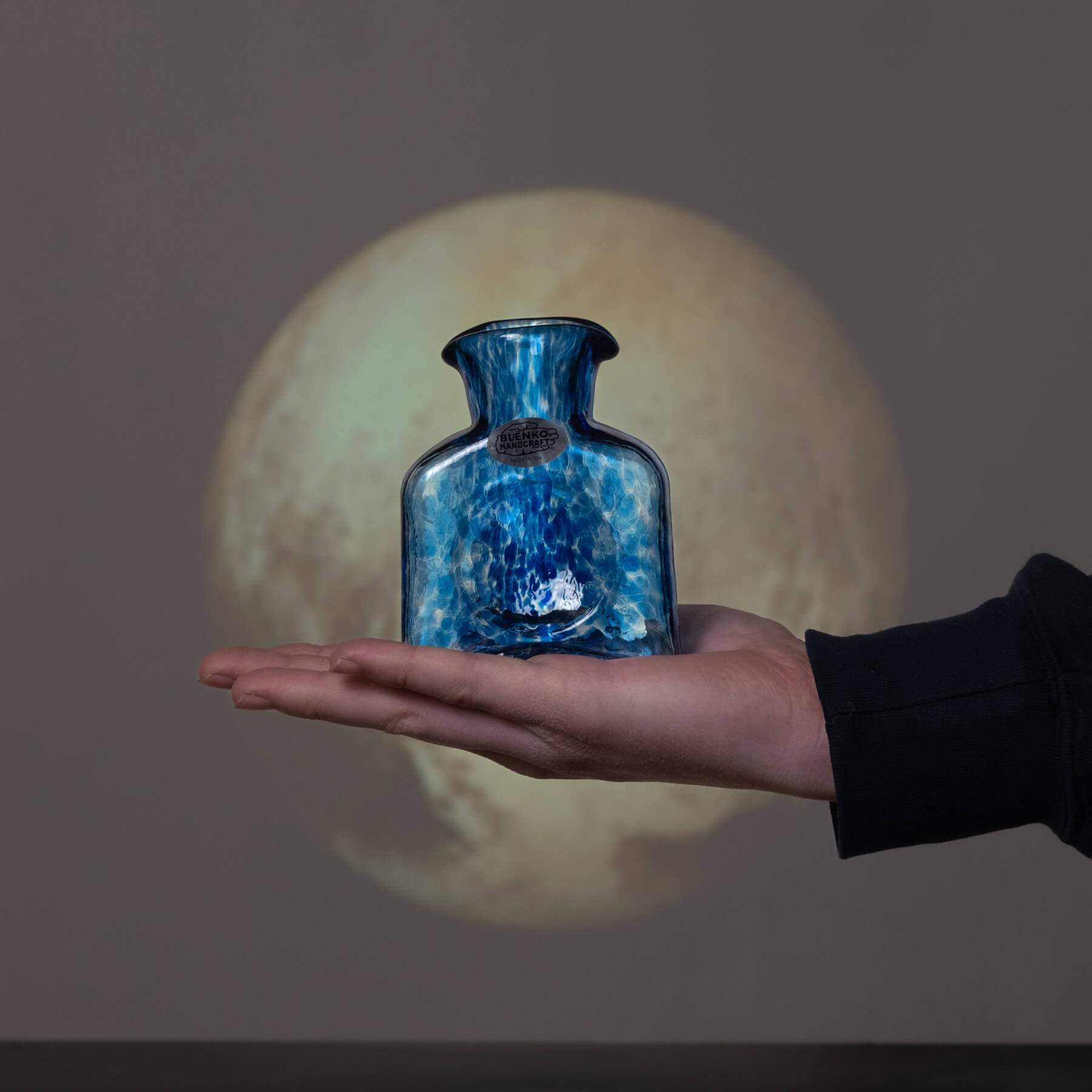
Is This Blenko? Part Three: A Glass of Many Colors
Did you know that Blenko Glass Company originally started as a stained glass manufacturer? The process of blowing, cutting, and flattening handblown stained glass was our stock in trade for the first few decades of our life. Our stained glass has found its way into all sorts of eminent 20th century architecture, including the National Cathedral and the Air Force Academy Chapel. But when the Great Depression struck, buying and displaying richly colored glass was suddenly an unpalatable expenditure when so many Americans were struggling to put food on the table.

So we had the great idea – why not make the tableware that helped feed Americans, instead? So we applied our deep archive of unique color recipes developed for the shades and gradations of stained glass panels. While other pressed-glass manufacturers were tinting their wares with watery shades of pastel colors, Blenko took the lead in delivering a punch of color to your table.
Depression pink, meet ruby red! Blenko has always appealed to the aesthetically sophisticated consumer – from our experimental midcentury forms to our super-saturated hand-batched glass. One of the pleasures of working behind the scenes at Blenko is donning a respirator and tracking down Little Ron, our glass chemist – and getting a peek at our ‘racks’ of archival color.

These beautiful wooden display racks are mounted in the windows of our batch room, and contain irreplaceable samples of all of the color formulations we developed through the midcentury. Each of these colors comes with a stored recipe card, handwritten by the chemist at the time, and updated over the decades following their first use. These recipe cards can be incredibly technical – melt temperatures, precise-to-the-thousandth quantities of chemicals, complicated ratios balancing the various ingredients. And sometimes they’re very much like your grandmother’s recipes: “A dash of this, a pinch of that.”

Of course, we have many more colors in these racks than we could - or would - ever use. A cursory glance reveals dozens of minutely-different shades of our Cobalt blue, for instance. Some recipe cards are lost to posterity. And not all of the colors are aesthetically pleasing in tableware applications. But they’re our inheritance, and our inspiration, and a constant source of delight and pleasure to Blenko fans and workers alike.

When you’re trying to identify a piece of American glass at Blenko, one of the first questions to ask is – is it one of our colors? According to our internal records, we’ve made more than eighty different colors as “line colors” – that is, as colors in which our wares are made for at least a calendar year. These colors often appear at the front, or back, of our catalogs in a lineup.
Sometimes we have colors on offer for several years, sometimes decades - like our fan favorite Tangerine, or our 21st century favorite Cobalt. But close watchers of Blenko will wonder – what’s the difference between Persian, Sapphire, and Cobalt? All derived from the same chemicals, these colors are, generally speaking, different saturations of the same essential color. Sometimes we make a colorway that itself shifts over time – as in our Tangerine. In its earliest applications, the color was rightly called ‘Tangerine’ for its uniform, warm reddish-orange color. We quickly discovered its spectacular striking features – that it changes hue depending on the amount of heat applied to it during making. That ombre Tangerine featured in our 1960s catalogs – but our 1970s applications of Tangerine leaned heavily on a sharp and sudden gradation from clear to a dark, rich red. We still use Tangerine in our current wares, and favor the yellow-to-red spectrum now. Fans of our Charcoal glass will note that our 21st century use of it differed from our 1950s use of the same – or our spectacular, one-year fluke “bluey” Charcoal hue in the 1960s.
Inasmuch as we re-use color names over time, in spite of some differences in their hue or value, we try to make sure that it comes close to the historical color. But handmade glass is a very finicky thing! We rediscovered this when a batch of sand delivered to use this past year was a little soggy – and when used to formulate our Tangerine color, delivered us Coral instead – a warm, redder, slightly more opaque red spectrum.
That doesn’t mean that these are the only colors of glass we ever made – but they’re going to be the most common colors found “in the wild.” But there are tons of colors and shades between our standard offerings, or outside of our normal spectrum, that make appearances over the year. (Who amongst collectors doesn’t marvel at our one ware in ‘Alpine’ – that beautiful melon?)
At Blenko, we’re always experimenting with colors, color formulae, color applications and color alterations. We are fortunate enough to wallow in color all day long – whether it’s walking through Shipping in the morning and being struck by the rays of colored light filtering through our windows – or walking through our Visitor Center gift shop and marveling at the rainbow of 384 Water Bottles on stark display.





















